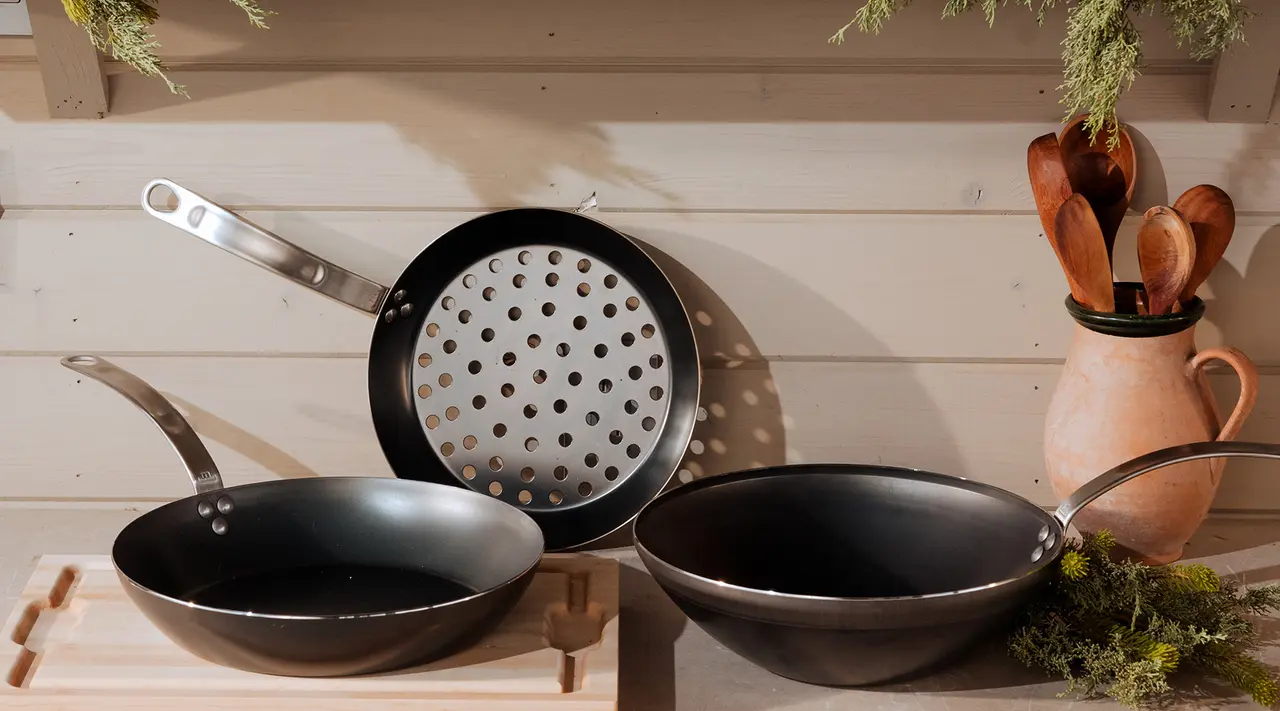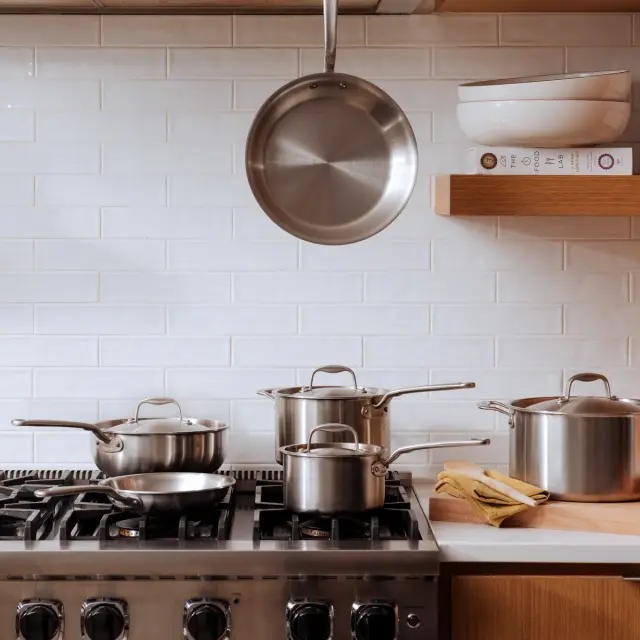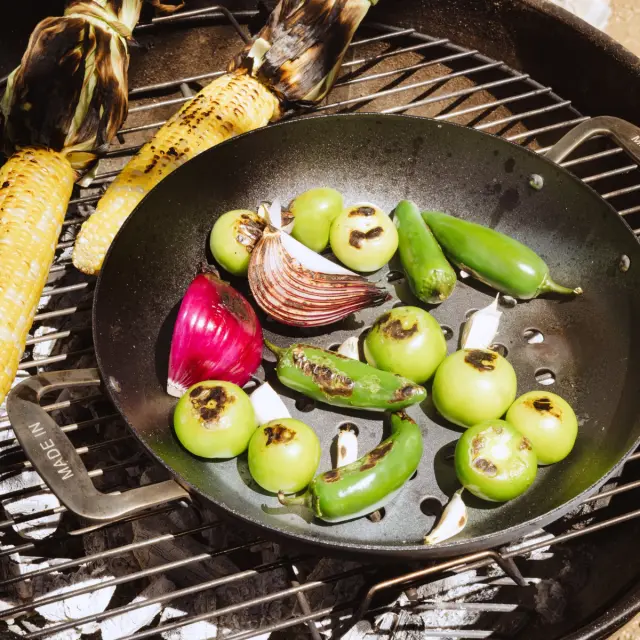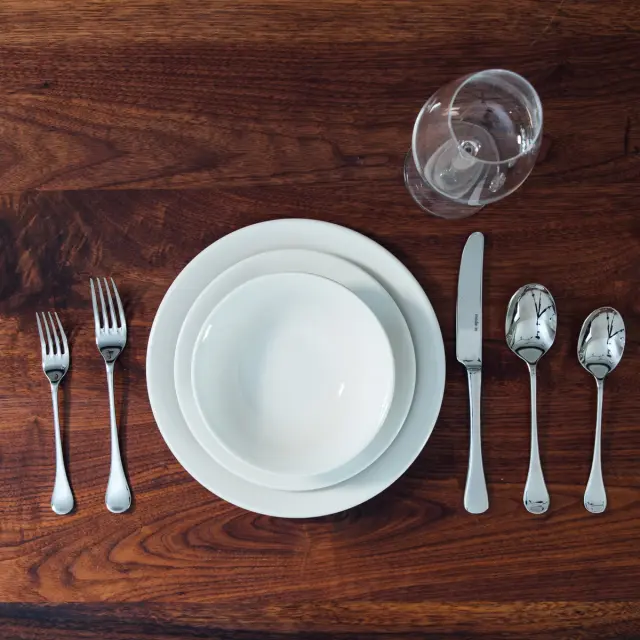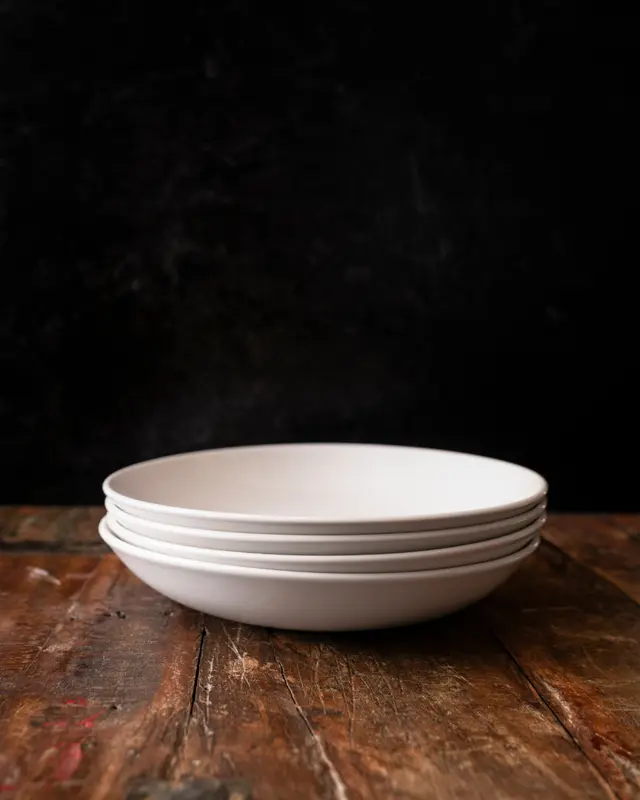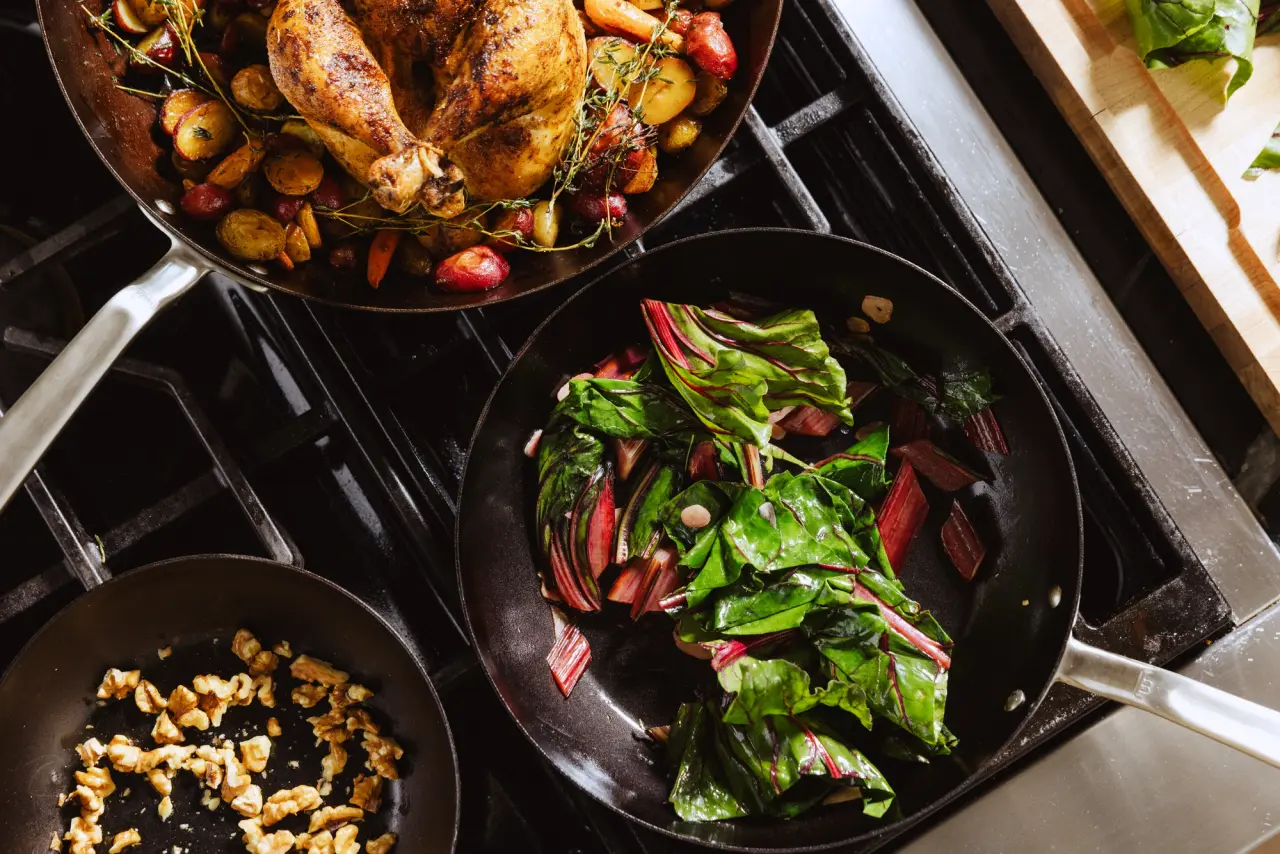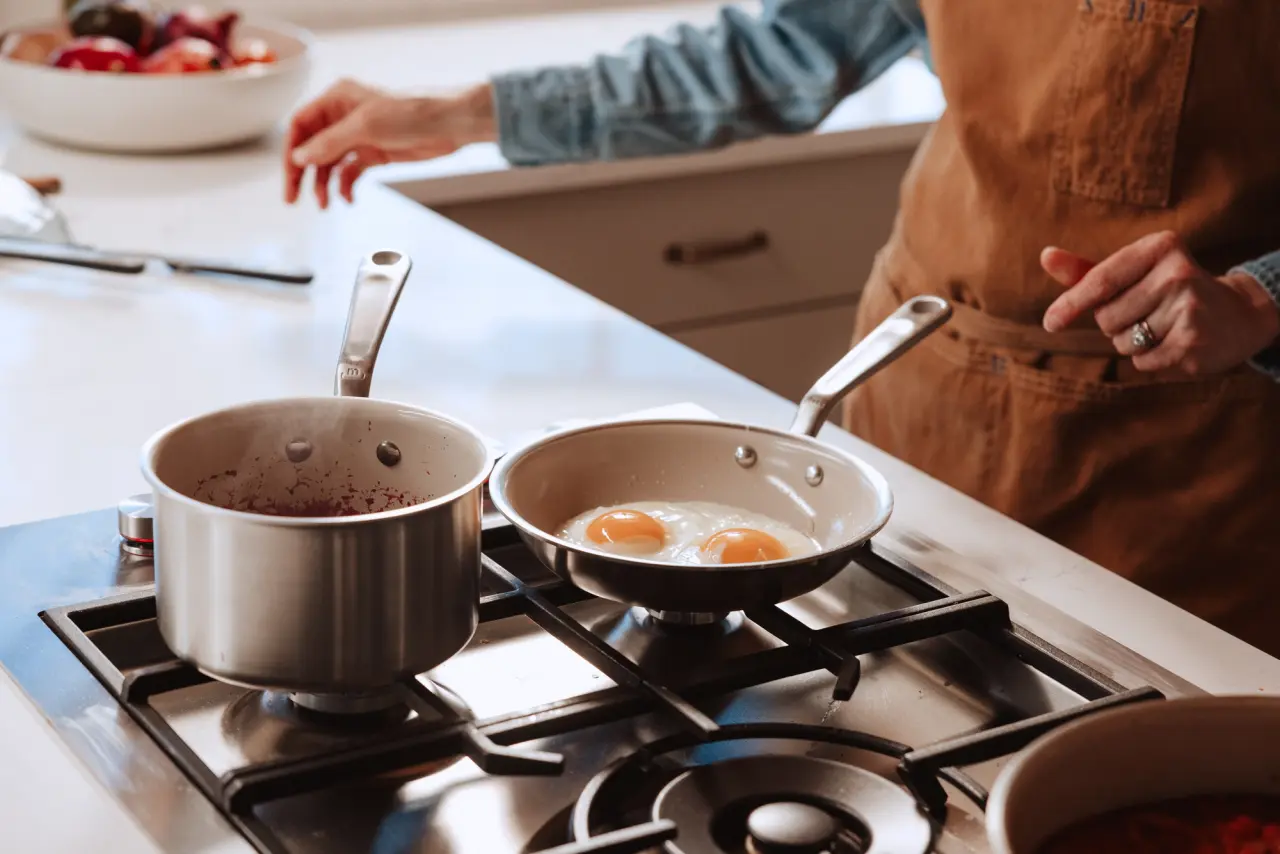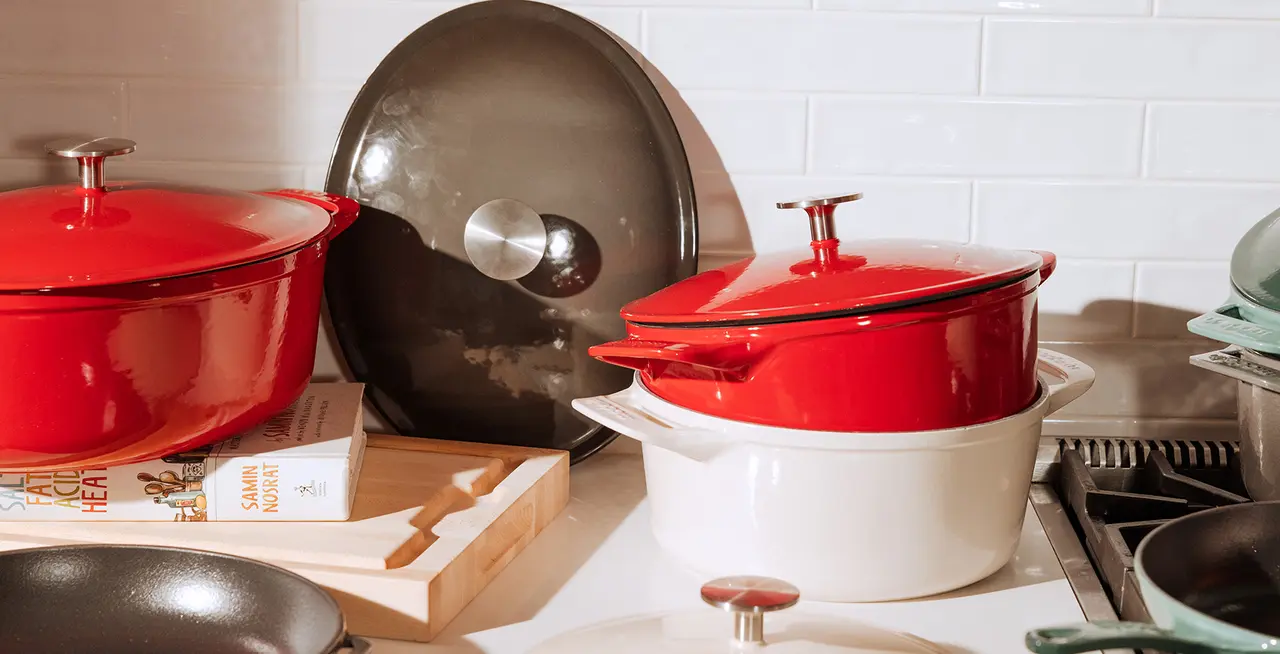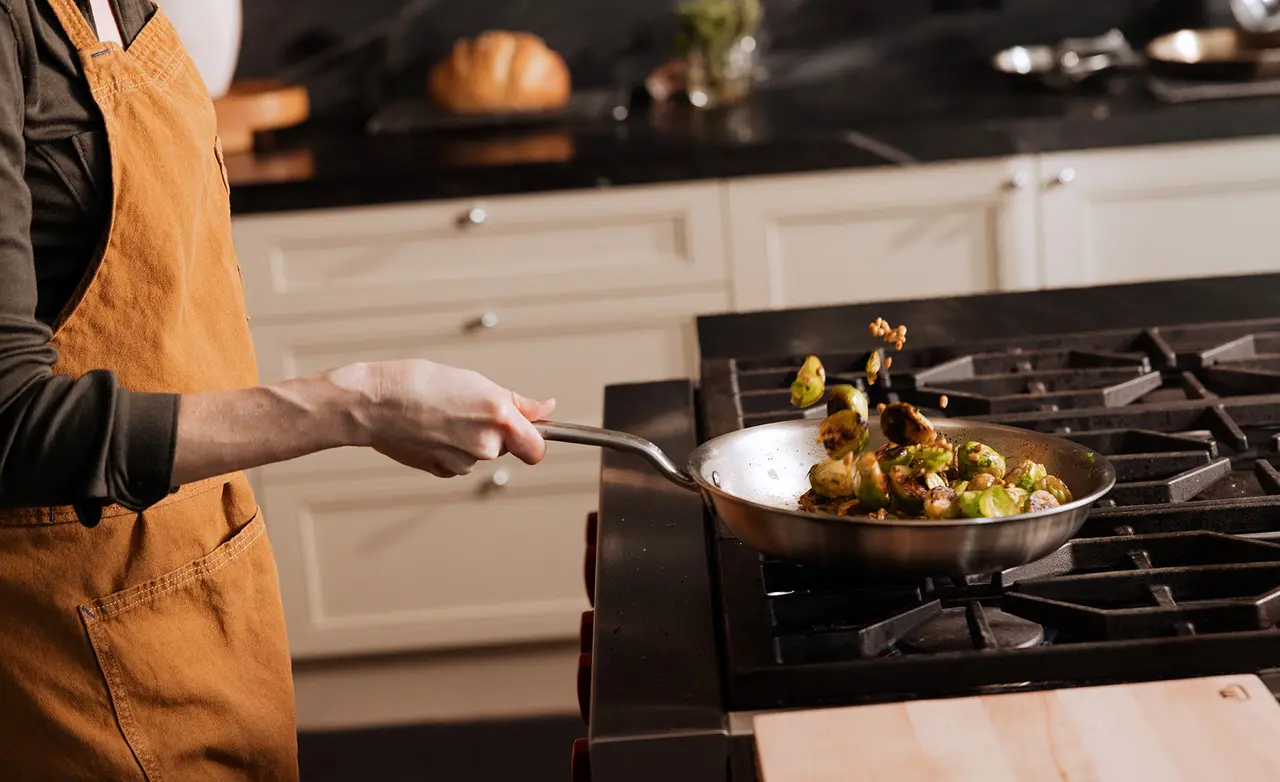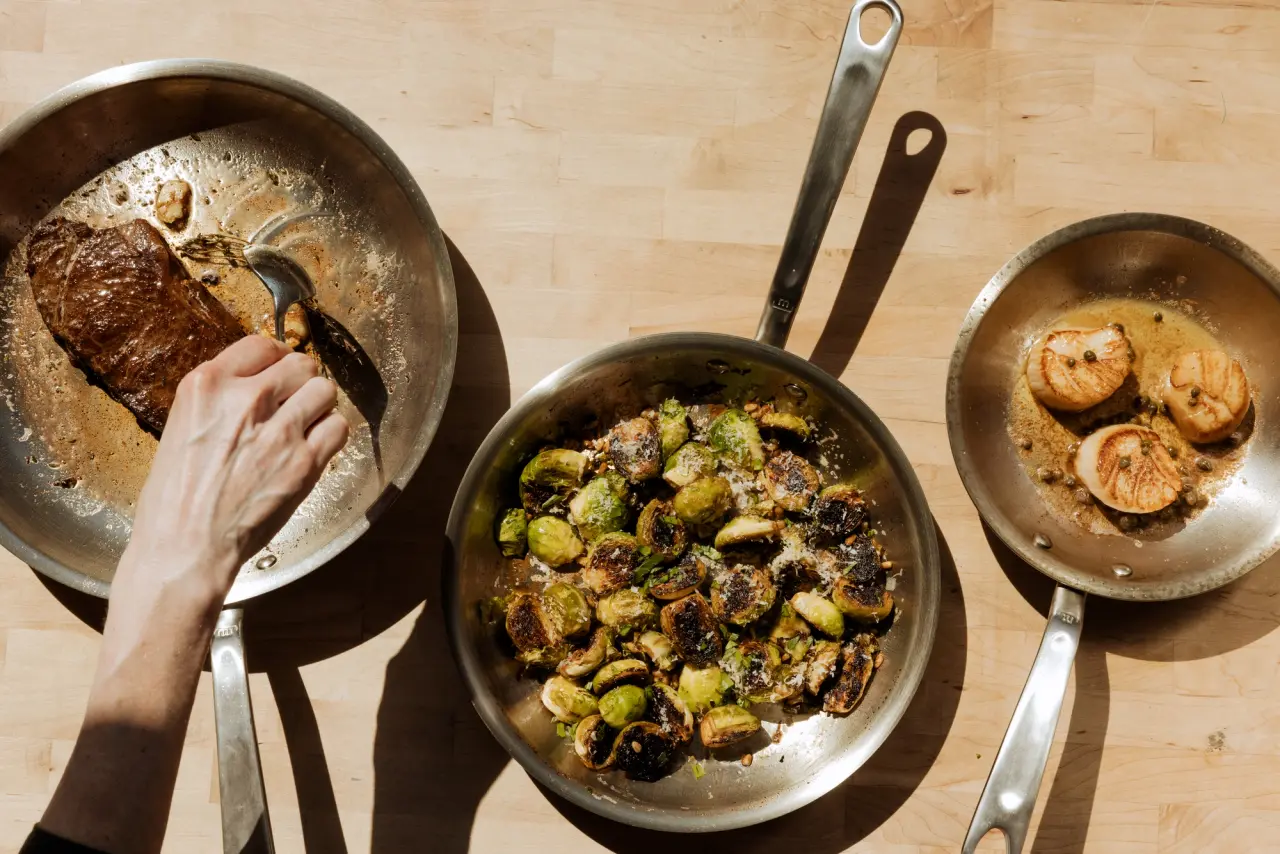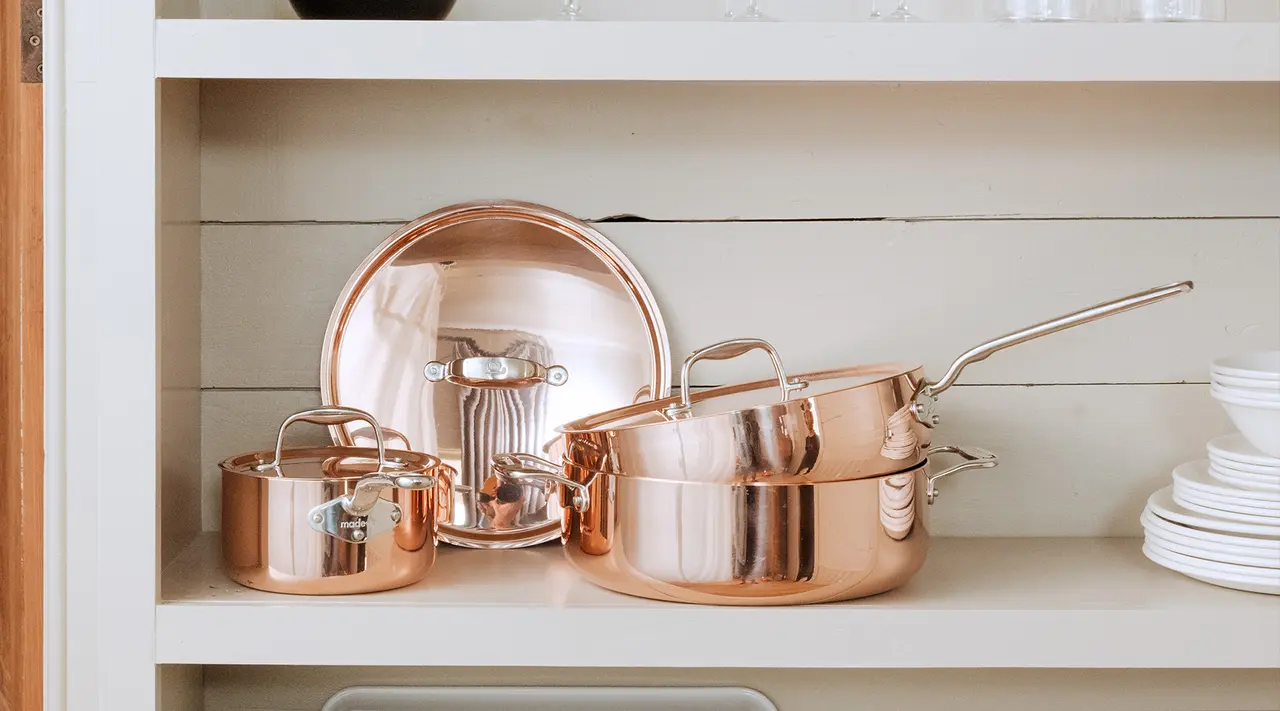Curious about carbon steel cookware? You’re not alone. We’ve compiled the most frequently asked questions from our customers to help you better understand how carbon steel works, how to care for it, and why it’s a favorite among chefs and home cooks alike.
- What is carbon steel cookware, and how does it differ from other materials?
- Is carbon steel cookware non-toxic?
- What does “seasoning” mean for a carbon steel cookware and why is it necessary?
- How does the seasoning process work?
- What heat sources and cooktop styles can used with carbon steel cookware?
- What types of dishes are best prepared with carbon steel cookware?
- How do you clean and maintain carbon steel cookware?
- Is it normal for carbon steel cookware to change color over time?
- Can I cook acidic foods in carbon steel cookware?
- How does carbon steel compare to cast iron in terms of weight and performance?
- Why is my carbon steel pan sticky or uneven after seasoning?
- Can I use metal utensils with carbon steel cookware?
- How should I store my carbon steel cookware?
- What should I do if my carbon steel cookware rusts?
- Ready to Cook?
What is carbon steel cookware, and how does it differ from other materials?

Carbon steel cookware is made from an alloy of iron and carbon. It’s thought of as a hybrid of cast iron and stainless steel—the same quick heating and distribution properties of stainless steel, with the heat retention and durability of cast iron (but lighter weight and with a smoother surface).
It heats quickly and evenly, making it ideal for various cooking techniques. Unlike traditional coated non stick pans and like uncoated cast iron, carbon steel develops a naturally non stick surface through a process called seasoning.
Is carbon steel cookware non-toxic?
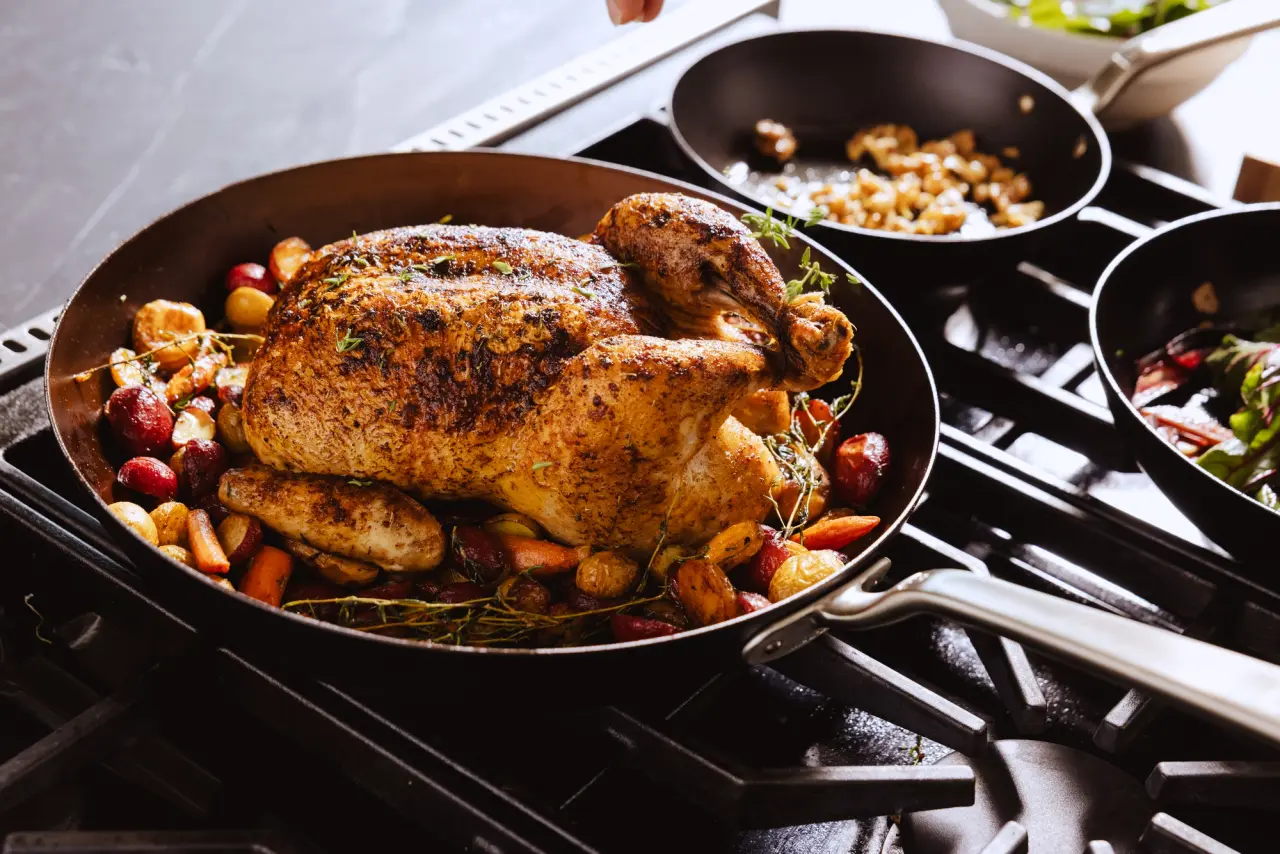
Carbon steel cookware is made from just iron and carbon, both of which are considered non-toxic and food-safe. All of Made In's Carbon Steel cookware is made without PFAS, PFOA, PTFE, Lead, Cadmium, Aluminum, or BPA. The non-stick qualities of carbon steel cookware occur naturally and these pieces are not coated.
What does “seasoning” mean for a carbon steel cookware and why is it necessary?
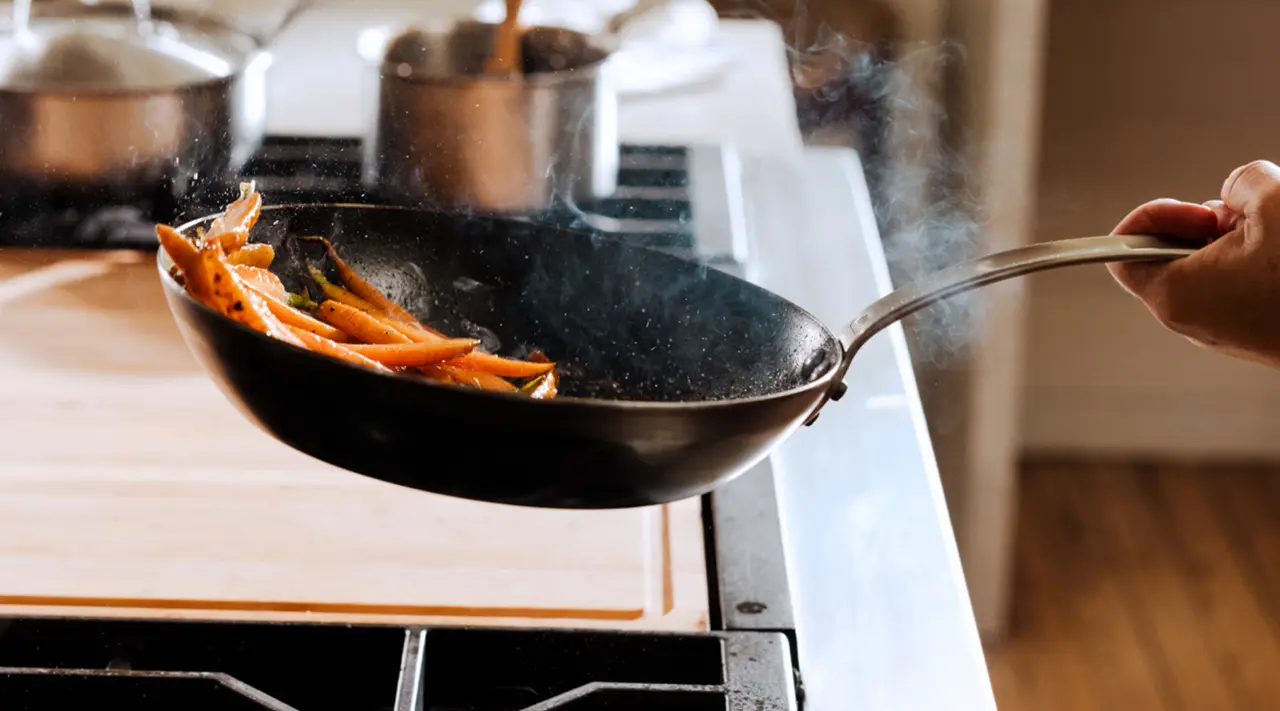
Much like uncoated cast iron, seasoning creates a protective layer through polymerizing oil to the surface of the pan over high heat. This layer prevents rust, provides a naturally non stick surface, and gets further built with proper care and use — meaning your pan just gets better the more you cook with it.
How does the seasoning process work?

If you have purchased Made In's Seasoned Carbon Steel Frying Pan, the first two seasonings (the hardest ones) have been done for you. To season carbon steel, follow these instructions or those laid out in our seasoning guide:
- Clean the pan thoroughly to remove any protective coating.
- Dry it completely.
- Apply a thin layer of high-smoke-point oil (like flaxseed or grapeseed).
- Heat the pan until it smokes, then let it cool.
- Repeat the process 2-3 times for optimal results.
What heat sources and cooktop styles can used with carbon steel cookware?

Carbon steel cookware is compatible with gas, electric, induction, and even open flame cooking. Its versatility makes it suitable for use with stovetops, ovens, grills, and campfires.
What types of dishes are best prepared with carbon steel cookware?
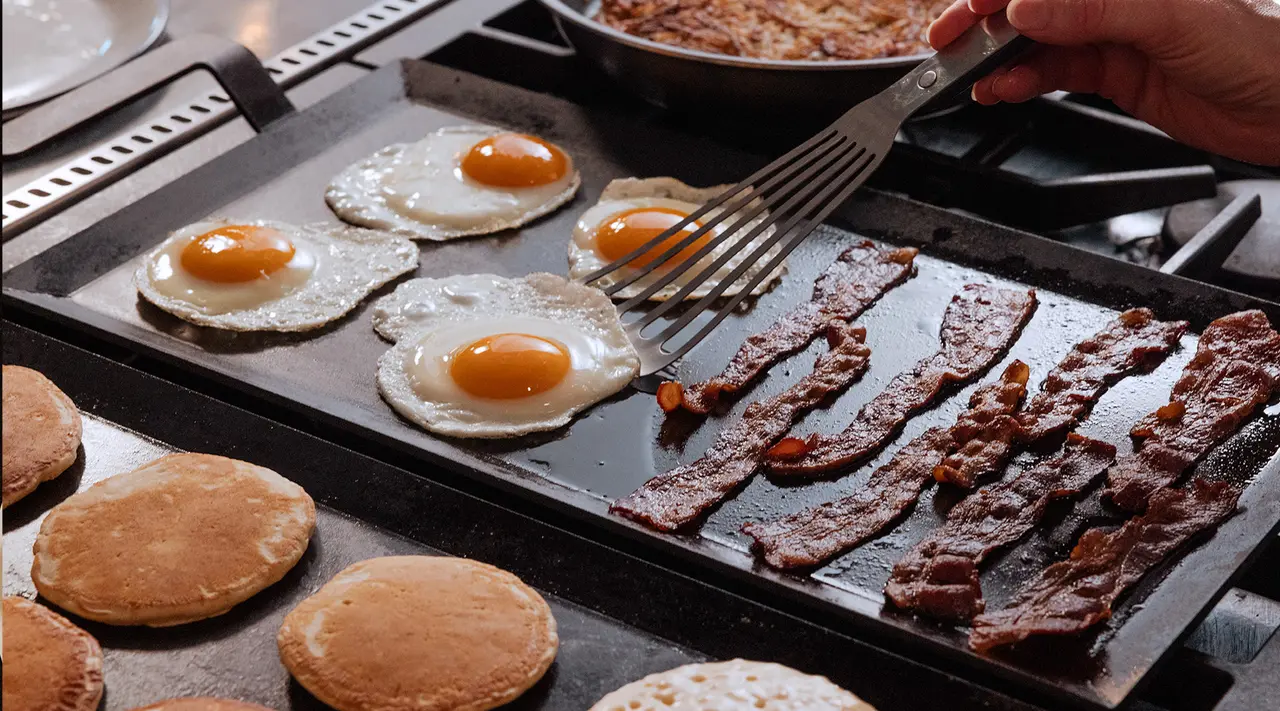
Carbon steel cookware excels at high-heat cooking methods like searing, sautéing, and stir-frying. We love using the Griddle for a full diner breakfast-style fry-up, the Grill Frying Pan over the grill or atop a campfire, and the Frying Pan for high-heat sears.
How do you clean and maintain carbon steel cookware?
Cleaning and maintaining carbon steel cookware is less intimidating than you may think. While it’s not as straightforward as cleaning it with soap and water or sticking it in the dishwasher, the care requirements are easy to learn and even easier to follow.
After cooking, let your pan cool and wipe it out with a paper towel or dish rag. You can also use warm water, coarse salt, and/or a fiber brush or stainless steel scrubber (like those found in the Carbon Steel Care Kit) to remove extra stubborn residue. Dry immediately and apply a light coat of oil to prevent rust and maintain the seasoning.
The Made In Carbon Steel Care Guide covers everything you need to know in greater detail to care for and maintain your carbon steel.
Is it normal for carbon steel cookware to change color over time?

With regular use and proper seasoning, carbon steel pans will gradually darken as its non stick patina develops. This enhances its cooking performance and means you’re building up a thoroughly naturally non stick cooking surface.
Can I cook acidic foods in carbon steel cookware?

It's best to avoid cooking highly acidic foods (like tomatoes or vinegar-based sauces) in carbon steel, especially in a newly seasoned pan, as they can strip the seasoning. This isn’t permanent and can be resolved with a quick reseasoning, but worth keeping in mind.
How does carbon steel compare to cast iron in terms of weight and performance?
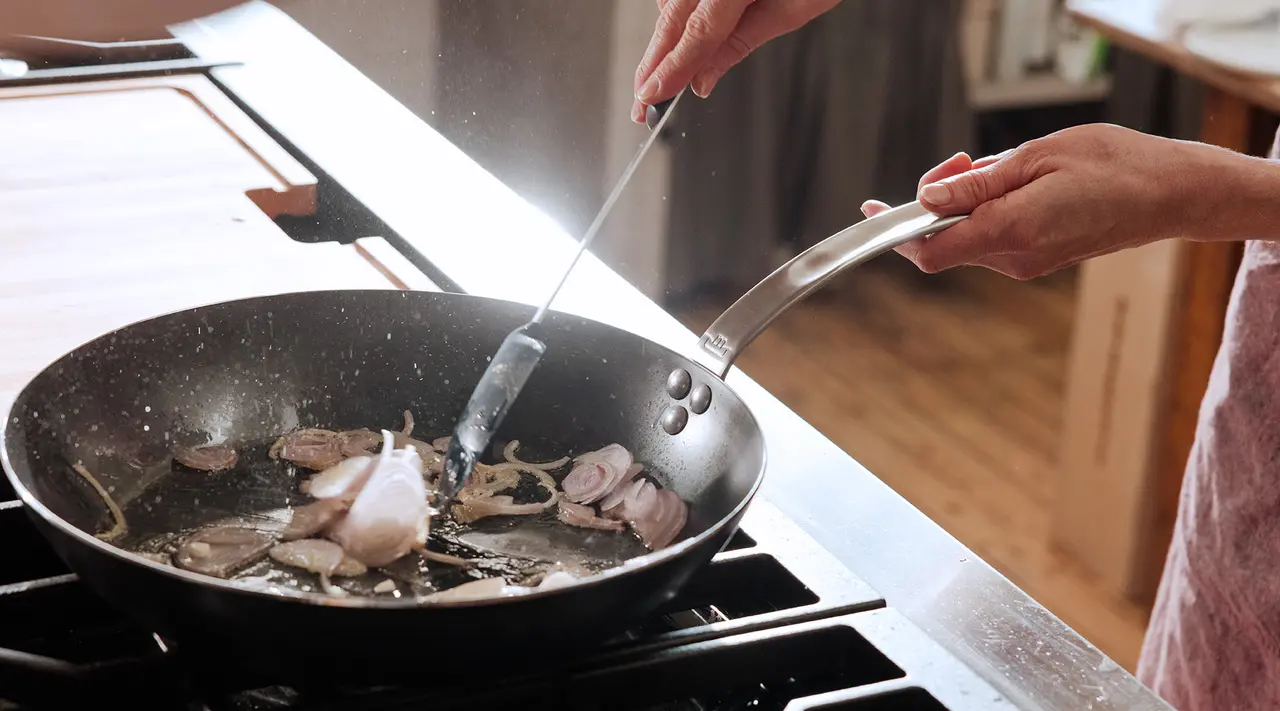
While both materials offer excellent heat retention, carbon steel pans are lighter weight and heat up more quickly than cast iron, providing a balance between performance and maneuverability. Check out our comparative guide to understand the nuanced differences between these two cookware materials.
Why is my carbon steel pan sticky or uneven after seasoning?

Sticky or uneven seasoning can result from errors in the seasoning process, namely applying too much oil or not heating the pan adequately. Over time and with continued use, the seasoning will even out, creating a smoother surface.
If this bothers you or you’re a perfectionist, you can strip your pan and start over.
Can I use metal utensils with carbon steel cookware?

Yes! Metal, wooden, and silicone utensils can all be used with carbon steel.
How should I store my carbon steel cookware?

We recommend drying your carbon steel cookware very well (over heat on the stovetop is best), letting it cool down, then storing your carbon steel cookware in a dry place, preferably with a light layer of oil buffed into the surface to prevent it from drying out or rusting. If stacking, place a paper towel or Pan Protector between pans to absorb moisture and protect the seasoning.
What should I do if my carbon steel cookware rusts?
Due to the high iron content, carbon steel is prone to rust, particularly if it’s not dried all the way or you live in a particularly humid environment. Luckily, it can be removed easily if it appears.
Our guide to removing rust from carbon steel covers this in detail, but in short: all you need to do is scrub the affected area with a mild abrasive (like a scouring pad), rinse, dry thoroughly, and re-season the pan to restore its protective layer.
Ready to Cook?
Still getting to know carbon steel? These FAQs are a great starting point for understanding what makes this material so beloved—and how to get the most out of it. With time and use, your cookware will only improve, becoming one of the most dependable tools in your kitchen.
Start your collection with Made In's chef-loved Carbon Steel Collection and experience the difference for yourself.
